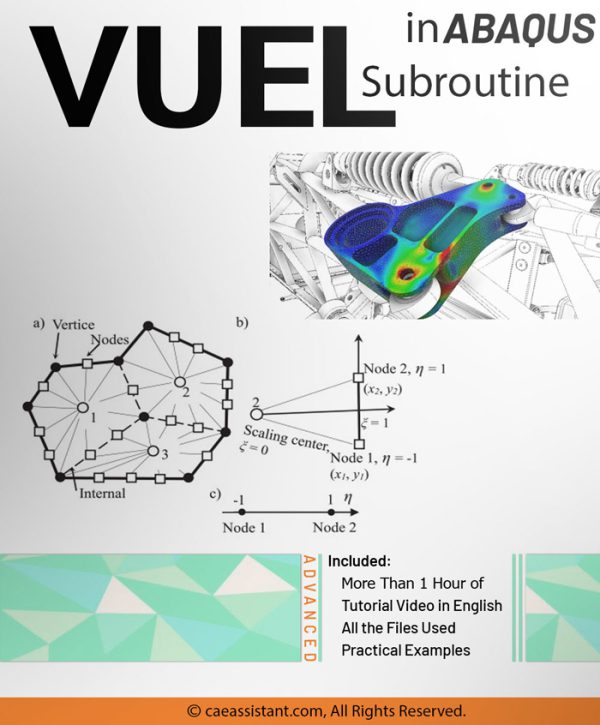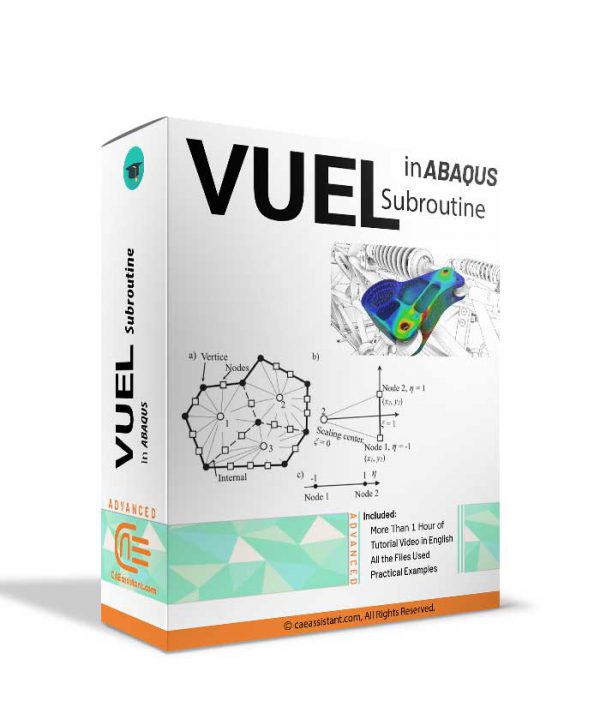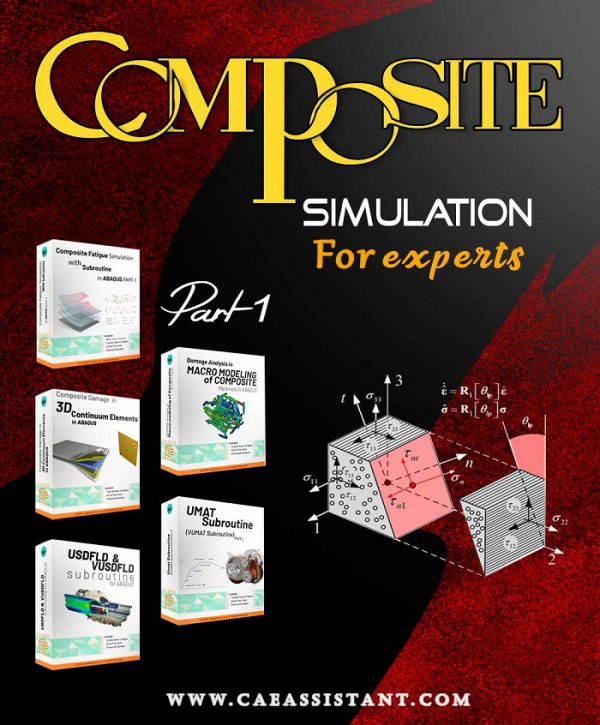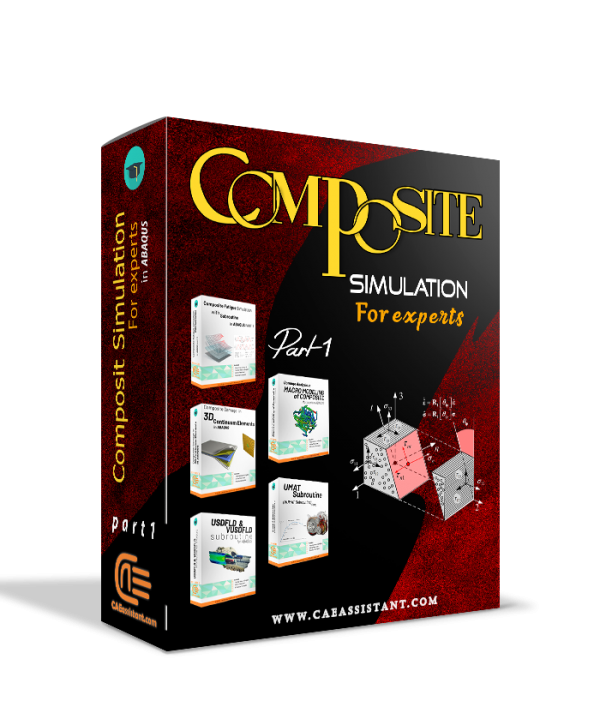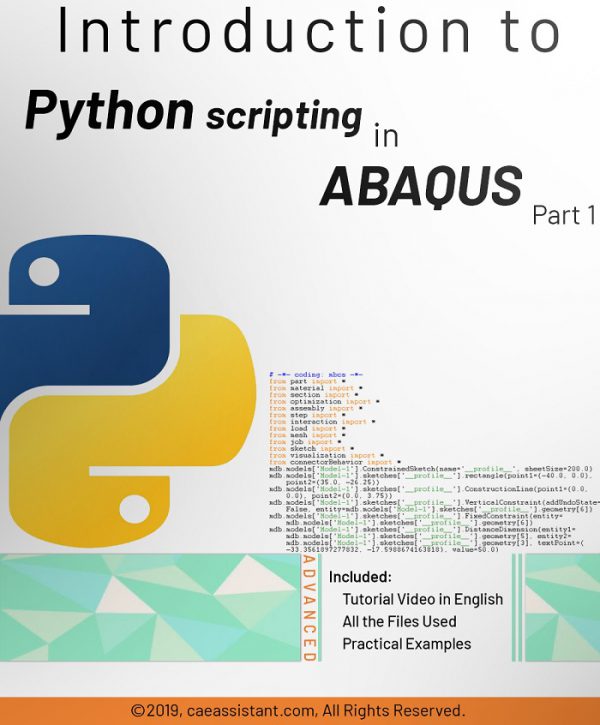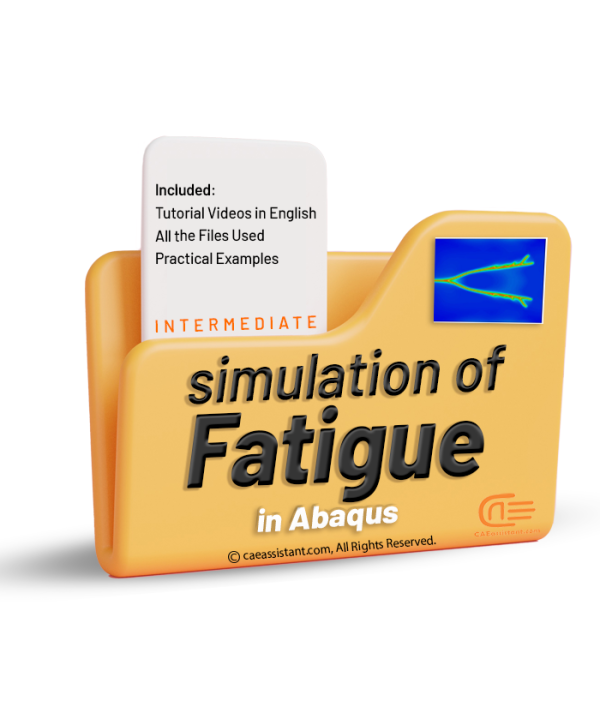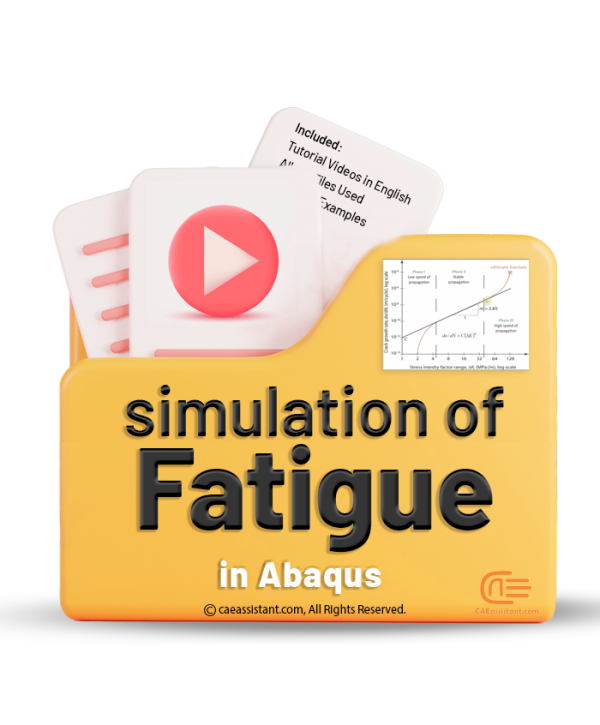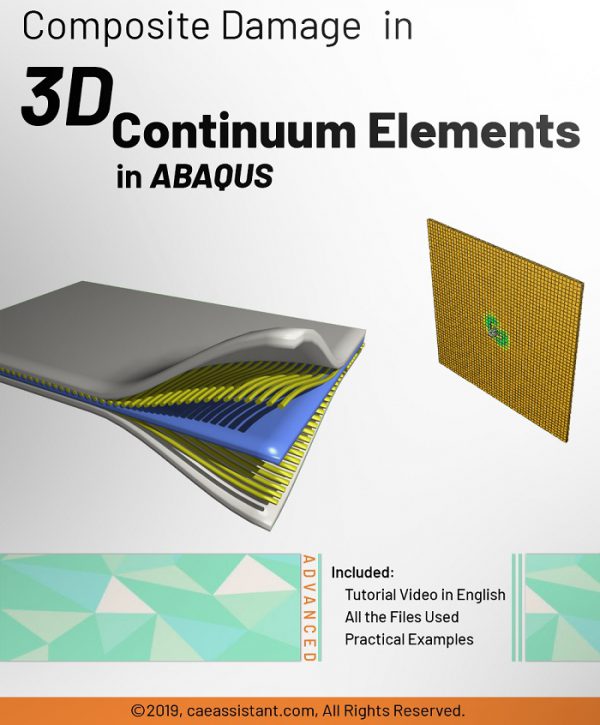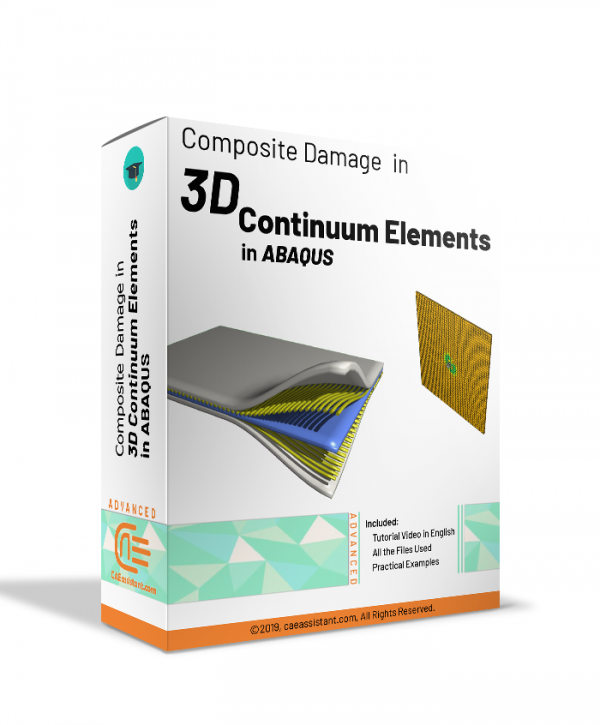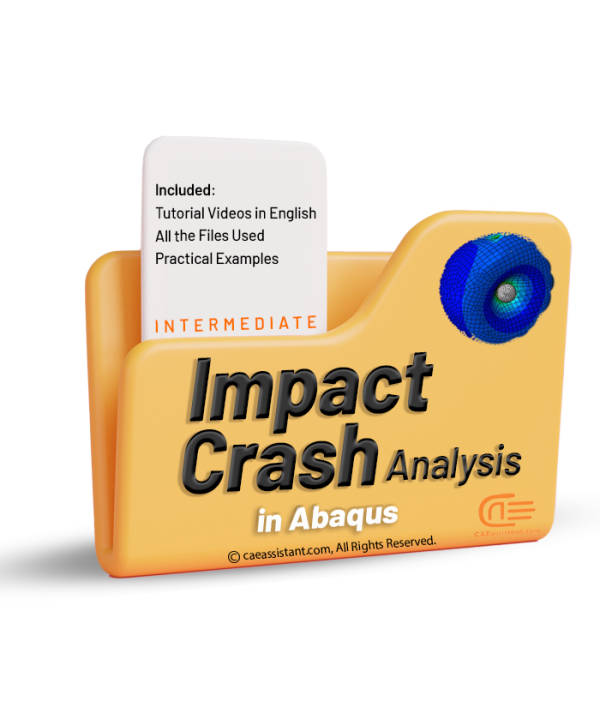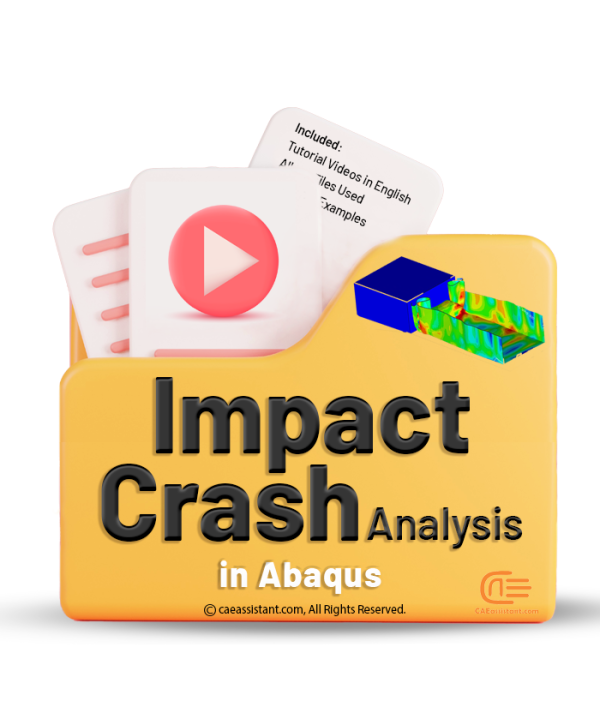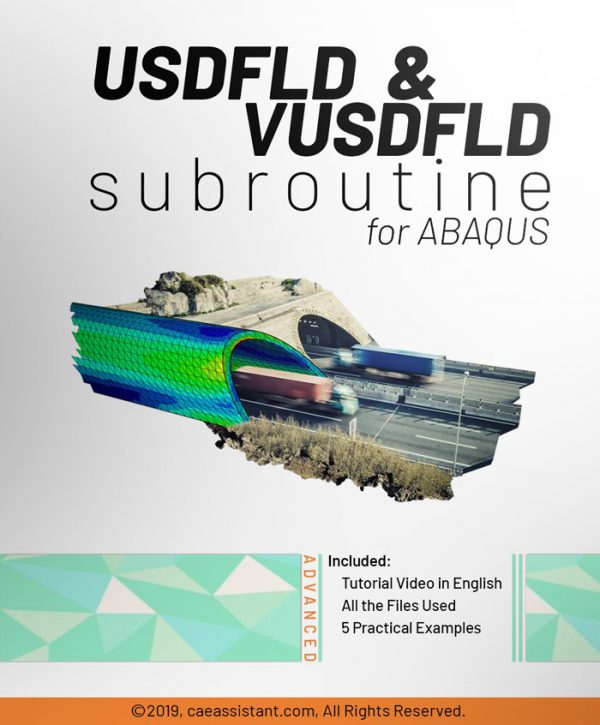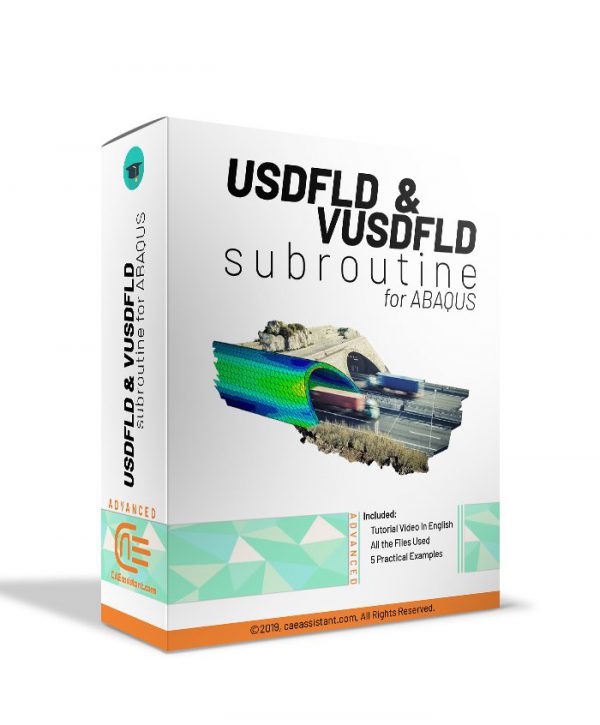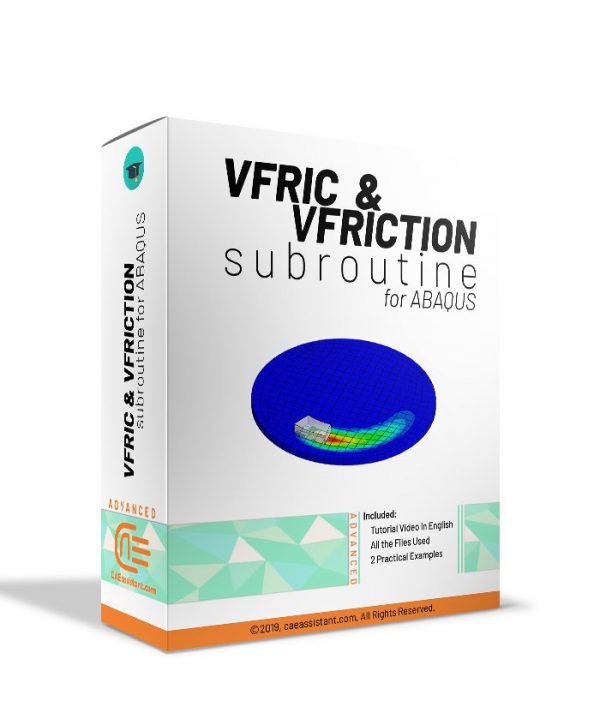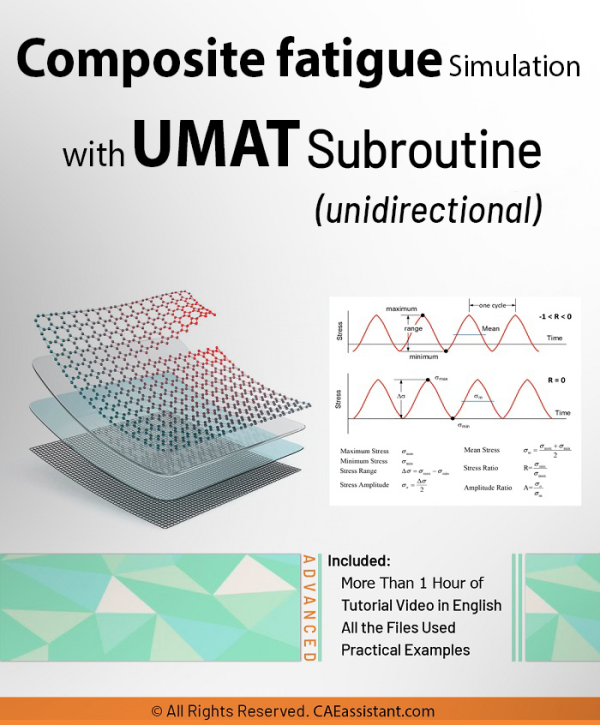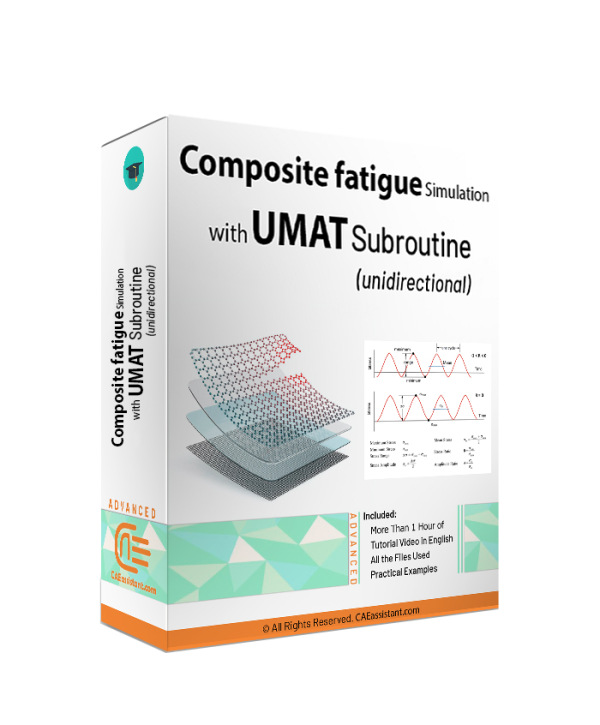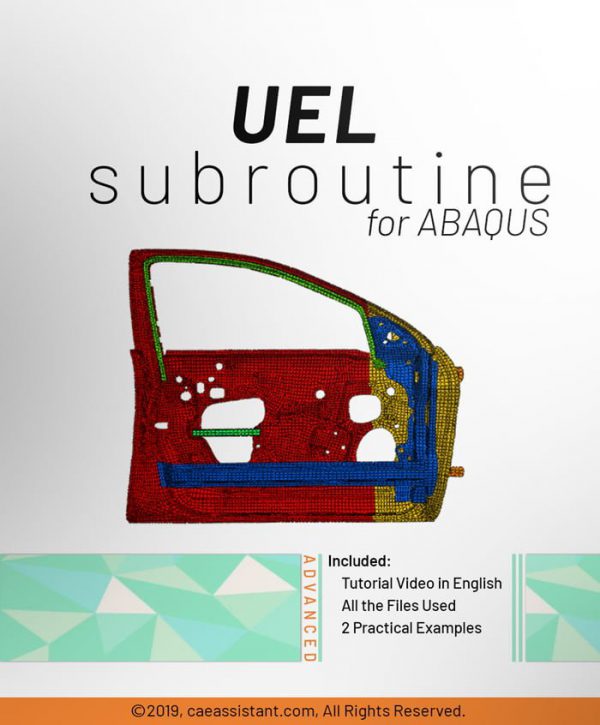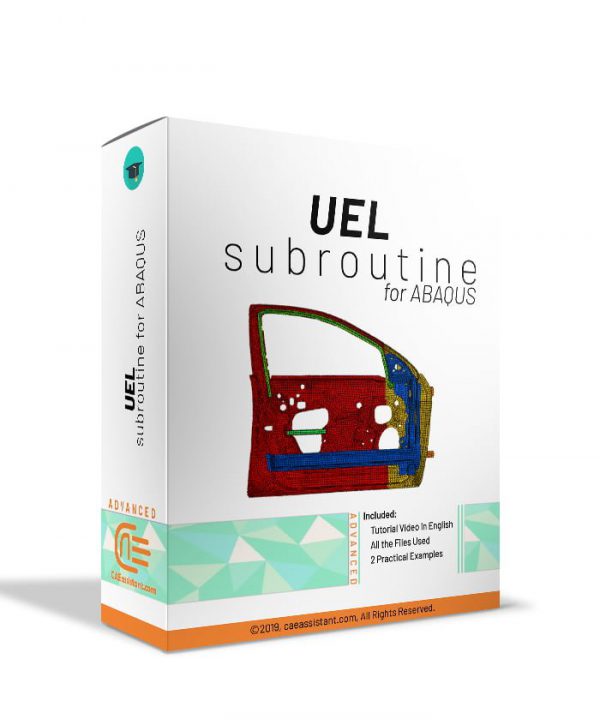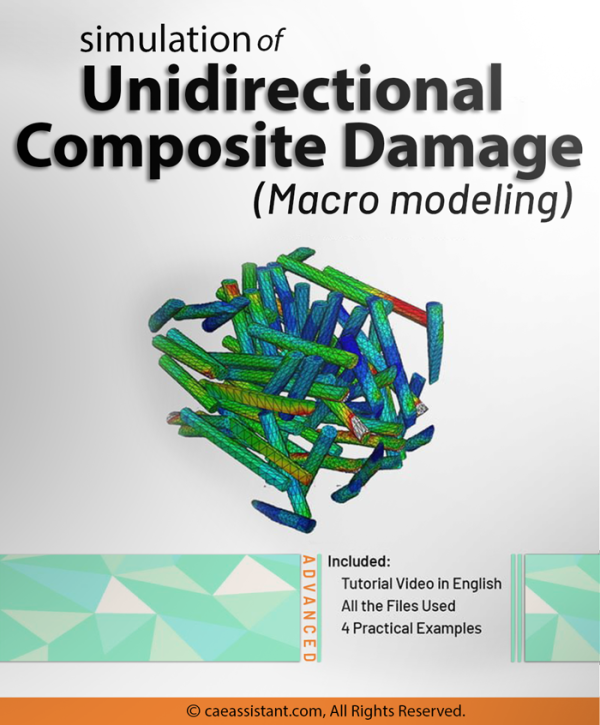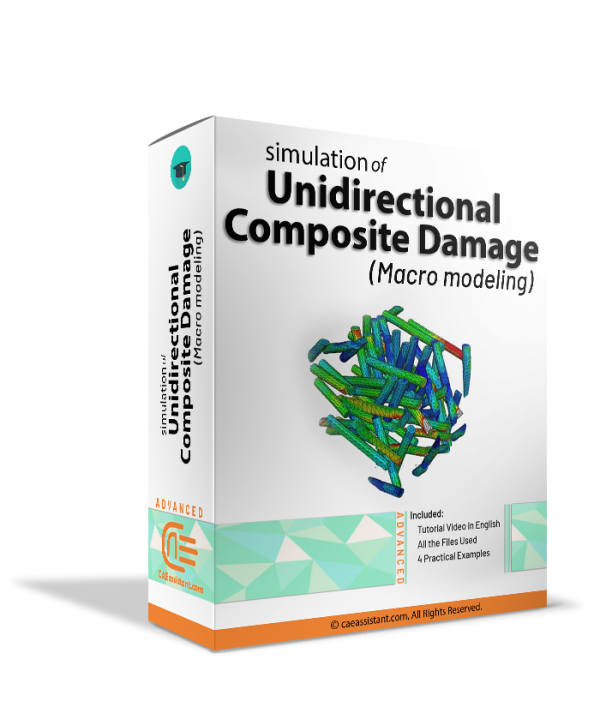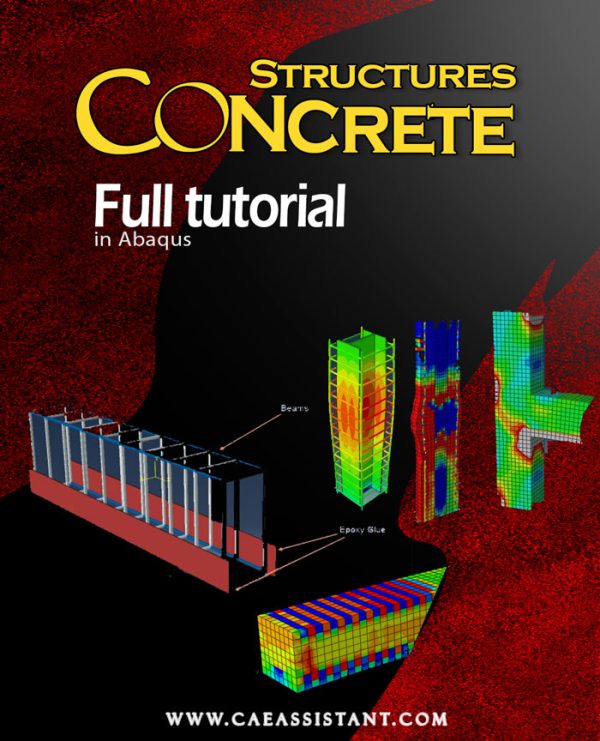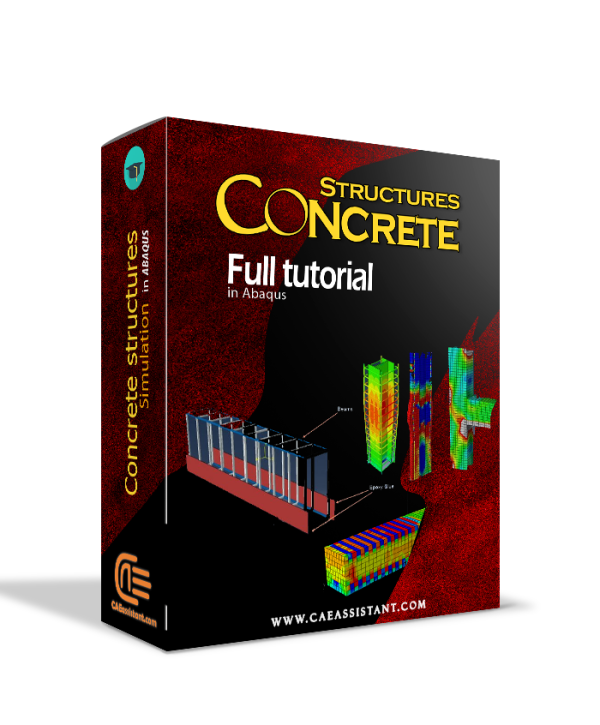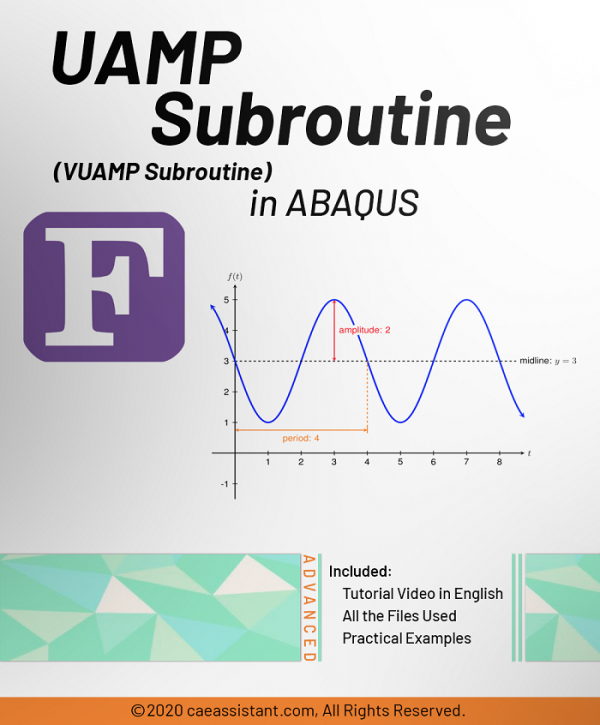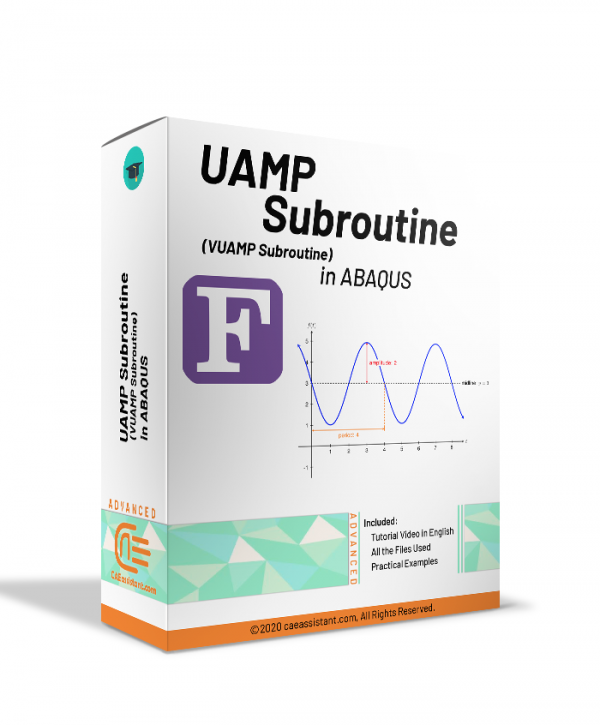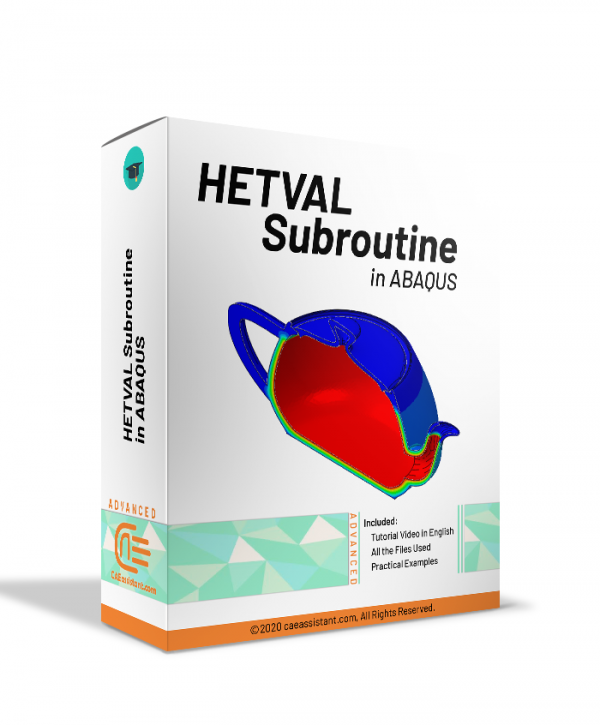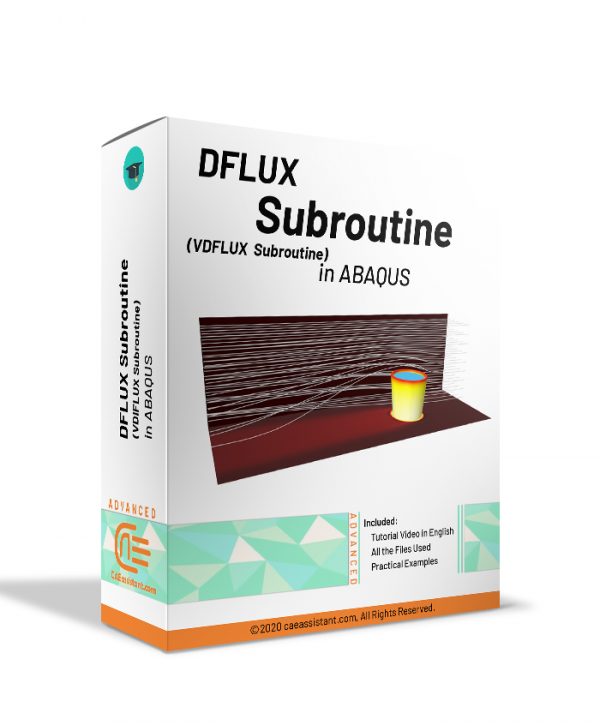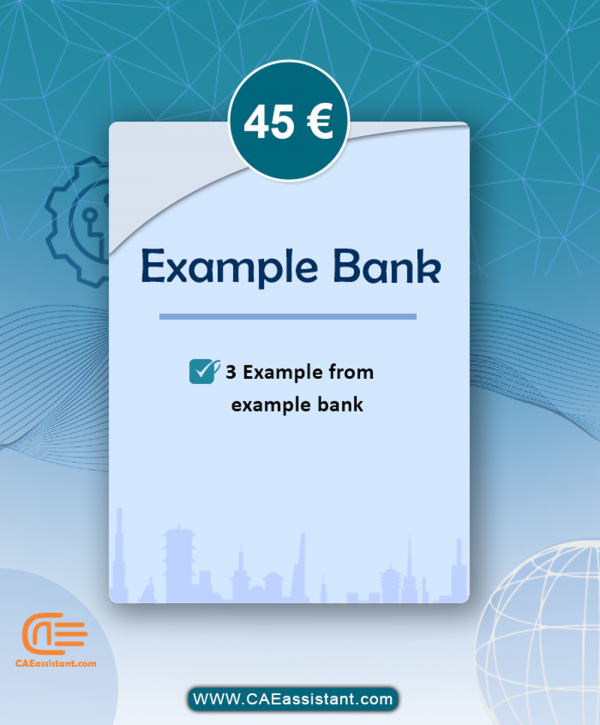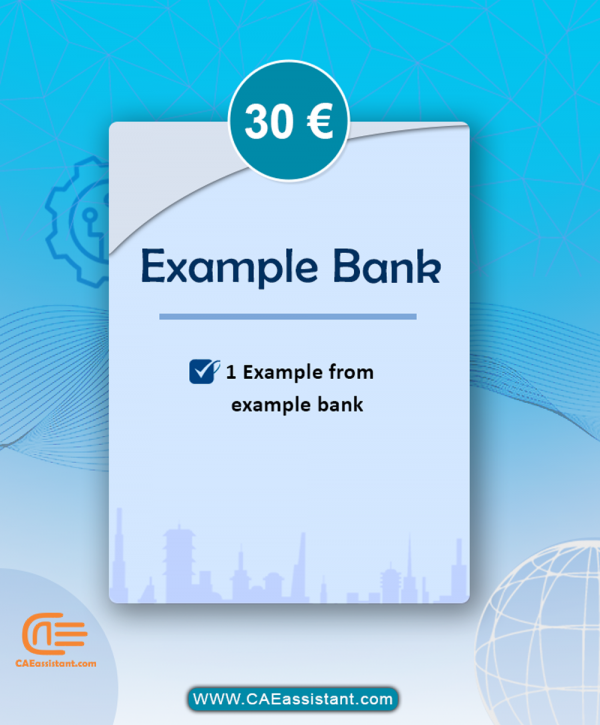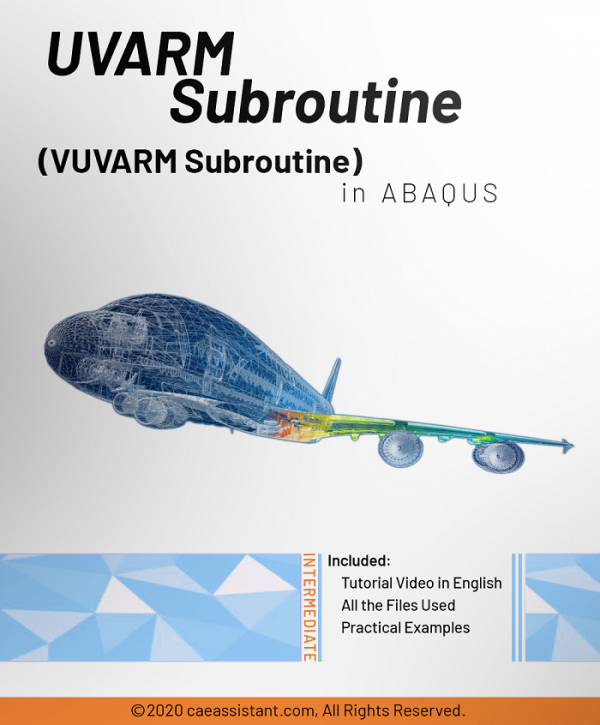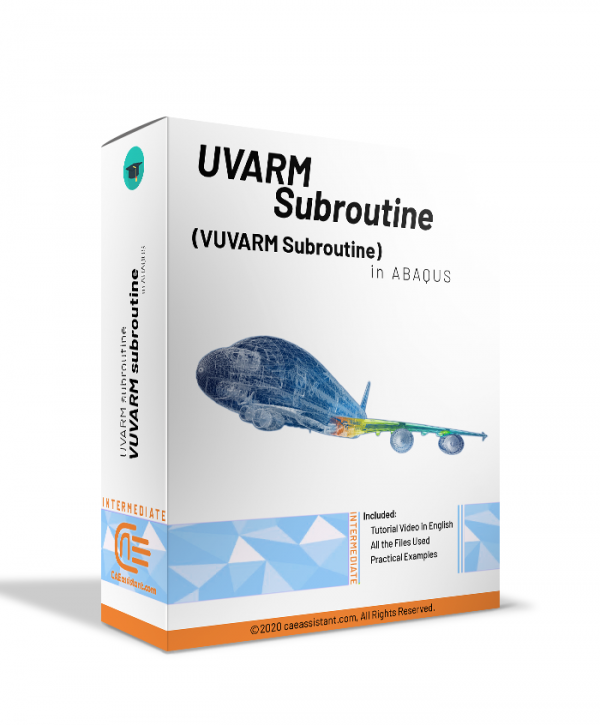Mechanical Enginerring
Introduction to VUEL Subroutine in ABAQUS
VUEL is the UEL subroutine for the Explicit solver. UEL is for the Standard solver, and VUEL is for the Explicit solver. Of course, there are some other differences between these two subroutines as well, such as in inputs, variables, etc. This tutorial package is used for writing the most sophisticated subroutines in ABAQUS, VUEL, which are applicable to customized problems. The stiffness matrix and nodal forces are the output of the subroutine, which can be defined based on several variables. This tutorial package contains two workshops: the first is divided into three sections, which model truss elements, and the second workshop explains how to use VUEL and VUMAT subroutines in one model.
Composite simulation for experts-Part-1
If you are a graduate or Ph.D. student, if you are a university professor or an expert engineer in the industry who deals with simulation software, you are definitely familiar with the limitations of this software in defining the material properties, loading or meshing, interaction properties, and etc. You have certainly tried to define the properties of materials based on advanced fracture theories in finite element software and are familiar with their limitations and problems.
Now, here is your solution. Start writing subroutines in finite element software and overcome the limitations. With the tutorials in the Golden Package, you will learn how to write 8 subroutines in Abaqus software professionally.
Python scripting in ABAQUS Part1
This training package includes workshops that help you to learn how to use Python scripting in Abaqus software. This is likewise the most comprehensive tutorial for the script, and it is appropriate for beginners to advanced users. The subjects such as parameterization, optimization, sequential running and etc., are covered in this tutorial.
Simulation of Fatigue in Abaqus
This training package includes workshops that teach you the XFEM method to simulate crack growth. This tutorial package enables you to model crack propagation in any 2D and 3D dimensional model. In addition, you will learn about the Paris law, direct cyclic approach, traction-separation law, and other theories that help you to simulate a crack growth problem in this package
Analysis of Heat Transfer in Abaqus
This Analysis of Heat Transfer in Abaqus package includes workshops that help you to fully learn how to simulate the temperature distribution and heat flux in solids under thermal loads. This tutorial package enables you to model thermal responses including all the modes of heat transfer, namely conduction, convection and radiation. The subjects such as using film conditions to simulate the convective heat transfer, the dissipation of the frictional heat generated, thermomechanical analysis and etc. are covered in this package
3D continuum Abaqus HASHIN progressive Damage for composite materials (VUMAT Subroutine)
This tutorial teaches how to simulate damage in 3d continuum composite materials in ABAQUS. As you know, Abaqus does not have any material model for 3d composite materials. So, the user needs to write a customized subroutine to simulate damage initiation and progressive damage for composite materials in ABAQUS. In this package, one of the most practical damage initiation criteria (Hashin) is used to detect failure. It should be mentioned that this subroutine includes gradual progressive damage based on the energy method. This complex subroutine could be used for static and dynamic problems.
Simulation of impact in ABAQUS
Impact in Abaqus is one of the most important mechanical tests used to check safety before construction. Due to the expansion of the use of this test in the industry, including the automotive industry, the importance of the issue has increased. In this package, by presenting 7 workshops, we try to teach you most of the capabilities of Abaqus software for this widely used topic.
Introduction to USDFLD and VUSDFLD Subroutine
In this usable tutorial, the material properties can change to an arbitrary dependent variable. One of the most important advantages of this subroutine is simplicity and applicability. Various and high usage examples are unique characteristics of the training package.
This training package includes 5 workshops that help you to fully learn how to use USDFLD and VUSDFLD subroutines in Abaqus software. By means of these subroutines, you will have expertise redefine field variables at a material point by the solution dependence of standard and explicit, respectively.Abaqus DLOAD Subroutine and VDLOAD Subroutine
This training package helps Abaqus users to prepare complex DLoad and VDLoad subroutines. With the help of these workshops, you can get acquainted with the basic and comprehensive way of DLoad and VLoad subroutine writing and their applications. By viewing this package as an engineer, you can do basic projects with complex loads.
Introduction to VFRICTION and VFRIC Subroutines in ABAQUS
This tutorial help you in cases where the classical Columbian equations are more complex and cannot be implemented by the graphical ABAQUS environment. This package introduces and teaches how to write these two subroutines. This introduction contains explaining different optional and mandatory parameters of VFRICTION and VFRIC subroutines.
Composite Fatigue Simulation with UMAT Subroutine in ABAQUS (unidirectional)
The composite fatigue training package completely teaches how to simulate and analyze a fatigue composite model with the help of UMAT Subroutine in Abaqus software. In this training package, we have provided all the files needed for your training, including articles, theories, how to write subroutines, and software settings.
Introduction to UEL Subroutine in ABAQUS
UEL stands for User-defined Elements. When you have a finite element analysis that requires an element type that doesn't exist in the Abaqus element library, you must write a UEL subroutine. Or, when you want to define various element shape functions, the UEL would be the best choice. This subroutine is one of the most sophisticated in the Abaqus and is intended for advanced users. With this tutorial package, you can become an advanced user and learn how to write such a complex subroutine. This package contains two workshops: writing a UEL subroutine for a planar beam element with nonlinear section behavior and writing a UEL subroutine for a beam element with specific boundary conditions and loading.
Watch Demo
Customized Package
Simulation of Unidirectional Composite Damage in ABAQUS
This package is about Unidirectional Composite Damage tutorial and applies various theories to initiate and progress damage in composite materials based on ABAQUS capabilities for different elements. As you know, according to the modeling done by the micro or macro method, the way of defining the Abaqus composite damage completely follows the separate method in ABAQUS. This training package is customized for Abaqus composite macro modeling. There are 5 different unidirectional composite examples to help you master unidirectional composite simulations and Abaqus composite laminate damage modeling. You can see the examples in the syllabus below.
Abaqus Concrete structure Modeling Full Tutorial
The package includes 19 workshops on topics such as concrete, beam-column structures, composites, steel rebars, Ultra-High-Performance-Fiber-Reinforcement Concrete columns, CFRP bars, hollow-core square reinforced concrete columns wrapped, damaged concrete beams, High Strength Concrete(HSC),ECC/Concrete Composite Beam-Column Joints, circular concrete-encased concrete-filled steel tube (CFST) stub columns, and etc. Every tutorial includes all needed files and step-by-step English videos and is explained from A to Z. Package duration: +600 minutes
UAMP subroutine (VUAMP subroutine) in ABAQUS
This package introduces UAMP and VUAMP subroutines in Abaqus. The UAMP and VUAMP refer to User-Defined amplitude. In Abaqus, load amplitude refers to the time-varying function that defines the magnitude and pattern of a load applied to a model during analysis. This amplitude can be defined using predefined amplitude functions or by creating a user-defined amplitude using the UAMP or VUAMP subroutines. The load amplitude can be applied to various types of loads including force, pressure, displacement, and temperature, allowing for a wide range of loading scenarios to be simulated in the analysis. The load amplitude plays a critical role in determining the response of the model over time. The UAMP and VUAMP subroutines can be determined by a mathematical time-dependent function or using sensor values that are defined by the user in analysis. In Abaqus, sensors are used to monitor and extract data from a simulation during its execution. In this package, you will learn all about the UAMP and VUAMP subroutines, all of their variables, how to work with them, their differences, and other things along with educational workshops to help you understand working with these subroutines.
HETVAL subroutine in ABAQUS
HETVAL is a user subroutine specifically developed to address the limitations of Abaqus in accurately handling volumetric heat flux resulting from internal heat generation within materials. The subroutine’s functionality depends on factors such as time, temperature, or evolving state variables, stored as solution-dependent variables. Accordingly, it can tackle scenarios involving phase changes during simulations. Moreover, the subroutine allows the integration of kinetic theory to account for phase changes associated with internal heat release, such as predicting crystallization in polymer casting processes. Such a multi-functional subroutine finds applications in heat transfer analyses, coupled thermal-electric studies, or temperature-displacement analyses. In this package, our primary goal is to provide valuable insights into the HETVAL subroutine and its diverse applications. Afterward, through a series of comprehensive workshops, we will guide participants in utilizing HETVAL under various conditions. In the final workshop, a problem will be presented, allowing you to explore a realistic example and gain hands-on experience in simulating the curing process within fiber-reinforced composites using HETVAL. Furthermore, to assist those unfamiliar with fiber-reinforced composites, we have included an introductory lesson covering their applications, significance, and an explanation of the importance of accurately simulating the curing process. By completing this package, you will have gained a comprehensive understanding of utilizing HETVAL across various conditions and scenarios. Moreover, you will have acquired the ability to simulate the heat generated during the curing process of fiber-reinforced composites, demonstrating a real-world application of HETVAL.
DFLUX Subroutine (VDFLUX Subroutine) in ABAQUS
DFLUX subroutine (VDFLUX Subroutine) is used for thermal loading in various body flux and surface flux states in heat transfer and temperature displacement solvers when flux load is a function of time, place, or other parameters. In this package, you will learn “when do you need to use this subroutine?”, “how to use the DFLUX subroutine”, “what is the difference between DFLUX & VDFLUX?”, “how to convert DFLUX to VDFLUX and vice versa?”, and “How to use it in an example?”. Three workshops are presented so you can learn all these stuff in action: Simulation of welding between two plate with DFLUX subroutine, Simulation of Arc welding between two tube with DFLUX, and Simulation of different types of functional heat flux(Body-surface-Element) in plate with Johnson-cook plasticity with VDFLUX subroutine(Thermomechanical Analysis).
Three Examples from Example Bank
In the Example Bank, there are hundreds of ready-made modeling examples that can help you in the simulations related to your project. By seeing similar examples, you can get an idea of how to prepare your model in Abaqus.
You can order three examples for 45 Euros and start modeling your project and if you had more questions and ambiguities order training packages and other products.
One Example from Example Bank
In the Example Bank, there are hundreds of ready-made modeling examples that can help you in the simulations related to your project. By seeing similar examples, you can get an idea of how to prepare your model in Abaqus.
You can order one example for 25Euros and start modeling your project and if you had more questions and ambiguities order training packages and other products.
UVARM subroutine in ABAQUS
UMAT Subroutine (VUMAT Subroutine) introduction
This package is usable when the material model is not available in ABAQUS software. If you follow this tutorial package, including standard and explicit solver, you will have the ability to write, debug and verify your subroutine based on customized material to use this in complex structures. These lectures are an introduction to write advanced UMAT and VUMAT subroutines in hyperelastic Martials, Composites and Metal and so on. Watch Demo
